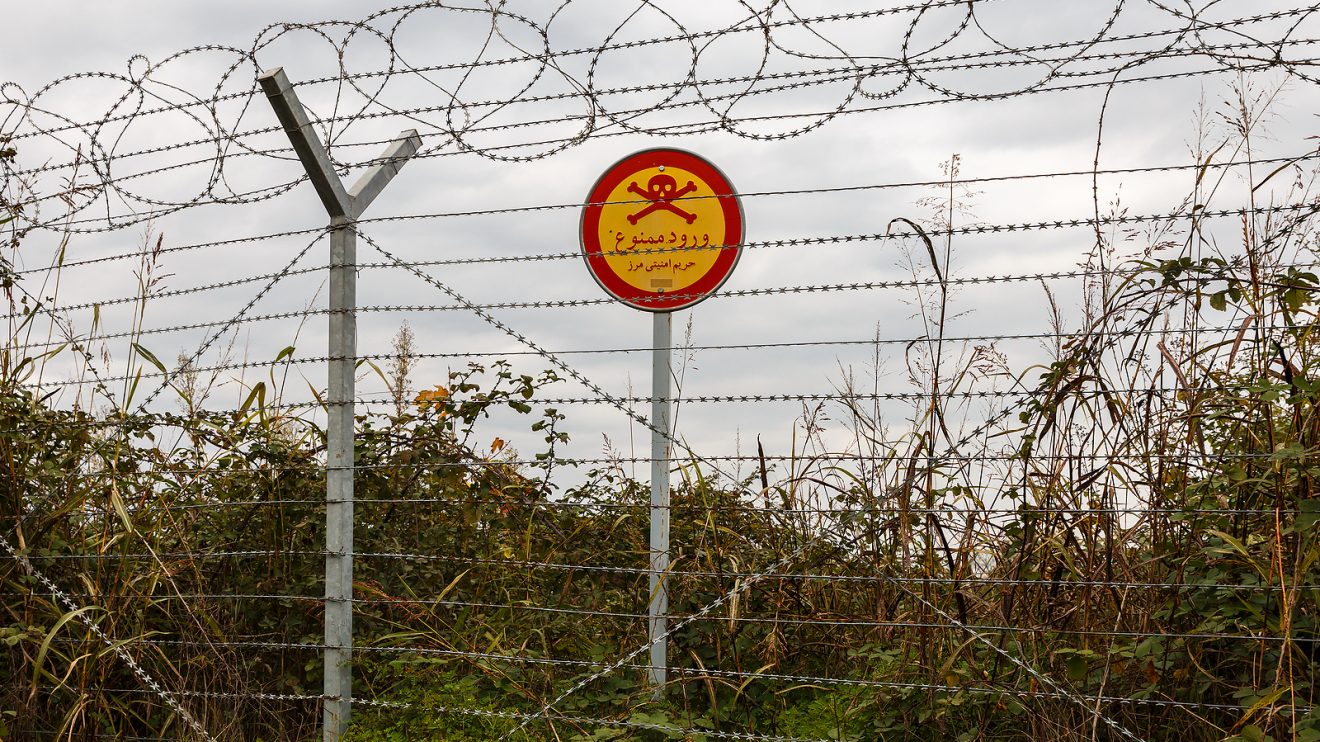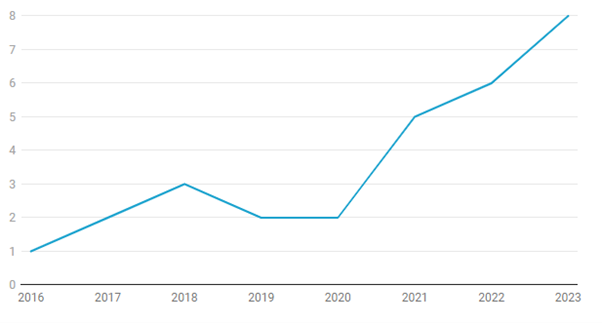2025
2025
2024-05-06

Following the 44-day war in Artsakh in 2020, Azerbaijan has been actively promoting the concept of so-called "Western Azerbaijan," signaling clear aspirations that extend to the entire territory of the Republic of Armenia. For decades, Baku has also promoted the idea of "Southern Azerbaijan," issuing territorial claims to Iran's northwestern provinces. According to this thesis, the Russo-Persian wars of the 19th century resulted in the division of Azerbaijan into North, South, and West Azerbaijan. Within this thesis, Iran's Eastern Atrpatakan, Western Atrpatakan, Ardabil, Qazvin, and Zanjan provinces, where the population is predominantly Turkic, are considered part of "Greater Azerbaijan." However, the Azerbaijani propaganda machine sometimes extends its claims beyond these boundaries, presenting territories as far south as Tehran as part of "historical Azerbaijan."

An Azerbaijani school textbook incorporating territories of Artsakh, Armenia, Georgia, Dagestan and Iran in ''Greater Azerbaijan''
These territorial claims against Iran emerged after the formation of the state named Azerbaijan, located north of the Araks River. Before 1918, the term "Azerbaijan" referred only to the territories south of Araks, the territory of historical Atrpatakan.
The name Azerbaijan (Persian: Azarbaijan) is the Arabicized version of Atrpatakan, derived from the new classical Persian Āδarbādagān/Āδarbāygān, which in turn comes from the middle Persian form Āturpātakān. Today, Iran's East Azerbaijan and West Azerbaijan (Atrpatakan) provinces are still called Azerbaijan.
The creation of a state called Azerbaijan north of the Araks River caused some confusion, but the choice of that name was intentional. In 1918, Iran sent a note of protest to the Ottoman Empire, which had influenced the selection of that name.
According to the famous orientalist V. Bartold, the name Arran, not Azerbaijan, must have been chosen for the state created north of Araks. In 1924, Bartold noted that the choice of the name "Azerbaijan" was intended to promote the "unification of the two Azerbaijans" in the future. This idea was promoted during the Soviet era and continued after Azerbaijan gained independence. During the Second World War, Soviet troops occupied northwestern Iran and established the Democratic Republic of Azerbaijan in that region. The authorities from Soviet Azerbaijan played a significant role in this issue. However, the Democratic Republic of Azerbaijan had a short life. The central authorities of Iran managed to reassert their control over these regions, and the 21st of Azar (December 12) is still celebrated in Iran as the day of the salvation of Atrpatakan.
Even after overcoming this crisis, ambitions of Azerbaijan for northwestern Iran have persisted. After Azerbaijan's independence, President Abulfaz Elchibey championed the idea of uniting the "two Azerbaijans." In 1991, Heydar Aliyev, who was the chairman of the Supreme Council of the Autonomous Republic of Nakhichevan at the time, declared December 31 as the "Day of Azerbaijanis of the World," implicitly including the Turkic-speaking inhabitants of northwestern Iran. Azerbaijani propaganda cites the "elimination" of the borders between Nakhijevan and Iran in December 1989 as the reason for celebrating this day. However, during the presidencies of Heydar Aliyev and later Ilham Aliyev, Azerbaijan has shown a degree of caution on this issue at the official level. Nonetheless, the government internally encourages the promotion of this thesis.
The topic, for example, was circulating in "scientific research". It should be noted that as early as 1976, the "Southern Azerbaijan" department was opened at the Institute of Oriental Studies of the Academy of Sciences of Azerbaijan, where they have been engaged in studies on "Southern Azerbaijan".
The activation of the "Southern Azerbaijan" concept in Azerbaijan and its speculation at the official level coincide with tense periods in Iran-Azerbaijan relations, specifically during the 2000s, the early 2010s, and after 2020.
For example, in March 2006, during the "Azeris of the World" conference in Baku, Ilham Aliyev stated, "There are 50 million of us worldwide. This is a huge number on a global level. Azerbaijan is the only homeland for all of us." During the tense period of the 2010s, some members of the Azerbaijani Parliament even suggested renaming Azerbaijan to North Azerbaijan. In the meantime, scientific conferences dedicated to the "national struggle and future of Southern Azerbaijan" were also held in Baku.
In Azerbaijan, the "Southern Azerbaijan" concept gained more momentum after the 44-day Artsakh war. The use of the term "Southern Azerbaijan" and references to "Southern Azerbaijanis" in the official Azerbaijani media increased significantly between 2021 and 2023, coinciding with rising tensions between Iran and Azerbaijan. This is evidenced by a study conducted on Trend.az, one of Azerbaijan's state news agencies.
The mentions of "Southern Azerbaijan" in Trend.az

Beginning in the autumn of 2022, Azerbaijani television broadcasts started including "Southern Azerbaijan" in their weather forecasts, with news anchors sending greetings to those south of the Araks River. This trend has been further encouraged by large-scale demonstrations in Iran.
During this same period, Baku provided platform to various separatist figures from Iran. Specifically, Azerbaijani mass media conducted interviews with Mahmud Chehregani, the leader of the "South Azerbaijan Liberation Front." Ahmad Obali, the head of Günaz TV, the largest pan-Turkic propaganda outlet, also demonstratively visited Baku, as well as the occupied regions of Artsakh bordering Iran.
In November 2022, during the summit of Turkic-speaking countries, Aliyev referenced the 40 million Azerbaijanis worldwide (down from 50 million in 2006), emphasizing that as if many of them are deprived of the opportunity to receive education in their mother tongue—clearly alluding to the Turkic-speaking population in Iran. Aliyev then explicitly mentioned Iran, declaring that Azerbaijan would do everything possible to protect Azerbaijanis worldwide, including those in Iran.
In the context of the "40 million" and "50 million" Azerbaijanis, it's noteworthy that the Azerbaijani propaganda claims that the number of Turkic speakers in northwestern Iran ranges from 25 to 40 million. However, according to the latest official statistics from the Islamic Republic of Iran (2016), the number of the population in the Turkic-speaking provinces is
Therefore, the population of these five provinces is 10,780,000.
Although the majority of the population in these provinces is Turkic-speaking, Kurds, Armenians, and other ethnic communities also reside here. If we exclude members of these other ethnic groups, the number of Turkic-speaking inhabitants in northwestern Iran is less than 10 million.
Thus, Azerbaijan, by promoting the "Southern Azerbaijan" thesis, openly reveals its territorial ambitions towards the Islamic Republic of Iran.